Physical Address
304 North Cardinal St.
Dorchester Center, MA 02124
Fetal vascular disruption defects refer to structural defects that occur after a structure has formed normally, and they are usually limited to tissues within a defined area that are supplied by the affected blood vessels.
Decreased blood flow to the affected area leads to hypoxia, endothelial cell damage, hemorrhage, tissue loss, and repair.
Defects attributed to vascular defects included amniotic band defects, terminal transverse limb-reduction defects (most of which had associated digit-like nubbins), Poland anomaly, hydranencephaly, defects attributed to twin-twin transfusion, and jejunal atresia.
Because of the normal vascular interchange between monozygous twins, vascular disruptions from a deceased co-twin with disseminated intravascular coagulation can cause embolization defects in the surviving twin, such as hydranencephaly.
Selective reduction of one abnormal monozygotic twin can result in loss or disruption in the surviving twin.
Fetal brainstem disconnection syndrome is a vascular disruption defect with characteristic postnatal brain imaging findings (disconnection between the upper pons and the medulla oblongata with cerebellar hypoplasia).
Early amniocentesis (at 11 to 12 weeks instead of 15 to 16 weeks) has been implicated as one cause of clubfoot.
Amniocentesis is the presumed cause of many types of penetrating fetal injuries, including skin puncture marks; ocular perforation; limb, chest, and abdominal trauma; cranial nerve injuries; porencephaly; and arteriovenous fistulae, with most of these injuries occurring in the era before ultrasound-guided amniocentesis.
Congenital Zika virus infection can result in severe microcephaly with fetal brain disruption sequence, as well as joint contractures resembling amyoplasia arthrogryposis.
Fetal vascular disruption defects refer to structural defects that occur after a structure has formed normally, and they are usually limited to tissues within a defined area that are supplied by the affected blood vessels. Decreased blood flow to the affected area leads to hypoxia, endothelial cell damage, hemorrhage, tissue loss, and repair. In a Boston hospital-based study of 7020 infants born with structural defects among 289,365 consecutive births surveyed over 41 years (1972 to 2012), 105 infants had defects attributed to vascular defects. These included 40 infants with amniotic band defects, 31 infants with terminal transverse limb-reduction defects (most of which had associated digit-like nubbins), 15 infants with Poland anomaly, 7 infants with hydranencephaly, 7 infants with defects attributed to twin-twin transfusion, 2 infants with limb deficiencies associated with homozygous alpha-thalassemia (with altered hemoglobin leading to hypoperfusion), 2 infants exposed to chorionic villus sampling, and 1 infant with jejunal atresia. Another study of the prevalence of defects attributed to vascular defects in Europe and the United Kingdom found similar prevalence in the United Kingdom and Europe for both transverse limb-reduction defects (2.16 vs. 2.14 per 10,000) and small intestinal atresia (0.85 vs. 0.86 per 10,000), as well as Poland anomaly and hydranencephaly (0.07–0.08 per 10,000).
Hydranencephaly is a rare congenital condition that occurs in which cerebral structures are often limited to only the brainstem and thalamus, with cerebral spinal fluid filling a membranous sac that is normally inhabited by the cerebral cortex. Because of the normal vascular interchange between monozygous twins, vascular disruptions from a deceased co-twin with disseminated intravascular coagulation can cause embolization defects in the surviving twin. In one of six such twin pairs, all the surviving monozygous twins had central nervous system infarcts and three had multiple-organ infarcts, and fetal death in utero occurred 1 to 11 weeks before the live birth of the monozygous survivor. In a larger study of brain imaging, zygosity, sex, and fetal demise in 56 proband twins and 7 less affected co-twins, brain disruptions were seen in 11 individuals with hydranencephaly, porencephaly, or white matter loss without cysts. Recurrent associations with twin-twin transfusion syndrome, intrauterine growth retardation, and other prenatal factors support disruption of vascular perfusion as the most likely unifying cause. Hydranencephaly can also result from autosomal recessive mutations in FLVCR2 , and rarely LAMB1 or CEP55 .
In 2016, a marked increase in the number of cases with severe congenital microcephaly and other defects in Brazil led to the discovery of Zika virus encephalopathy. Zika is an RNA virus that is related to other arborviruses such as dengue, yellow fever, Japanese encephalitis, and Nile viruses, and it is spread by the bite of Aedes species mosquitoes. Effects on infants born to prenatally infected mothers include structural birth defects and developmental problems. The risk of a structural birth defect among infants born to mothers with Zika virus infection during pregnancy range from 5% to 10%, with first-trimester risks higher than later exposures. Among 6799 live-born infants in the US Zika Pregnancy and Infant Registry born during December 1, 2015 to March 31, 2018, 4.6% had any Zika-associated birth defect; in a subgroup of pregnancies with a positive nucleic acid amplification test for Zika virus infection, the percentage was 6.1% among live-born infants. The brain and eye defects most frequently reported included microcephaly, corpus callosum abnormalities, intracranial calcification, abnormal cortical gyral patterns, ventriculomegaly, cerebral or cortical atrophy, chorioretinal abnormalities, and optic nerve abnormalities. A distinctive phenotype (the congenital Zika syndrome) was characterized with five features that were rarely seen with other congenital infections: (1) severe microcephaly with a partially collapsed skull; (2) thin cerebral cortices with subcortical calcifications; (3) macular scarring and focal pigmentary retinal mottling; (4) congenital contractures; and (5) marked early hypertonia with symptoms of extrapyramidal involvement. Anomalies of shape of skull and redundancy of the scalp (fetal brain disruption sequence) were present in 70% of 83 infants with congenital Zika syndrome who were born in Brazil with congenital Zika syndrome from July 2015 to March 2016 ( Figs. 51.1 and 51.2 ). In addition, these infants with congenital Zika syndrome manifested features consistent with fetal immobility, ranging from dimples (30.1%), distal hand/finger contractures (20.5%), and feet malpositions (15.7%) to generalized arthrogryposis (9.6%). These defects all appear to be secondary to vascular disruption, and in addition to arthrogryposis, terminal transverse limb defects have been reported.
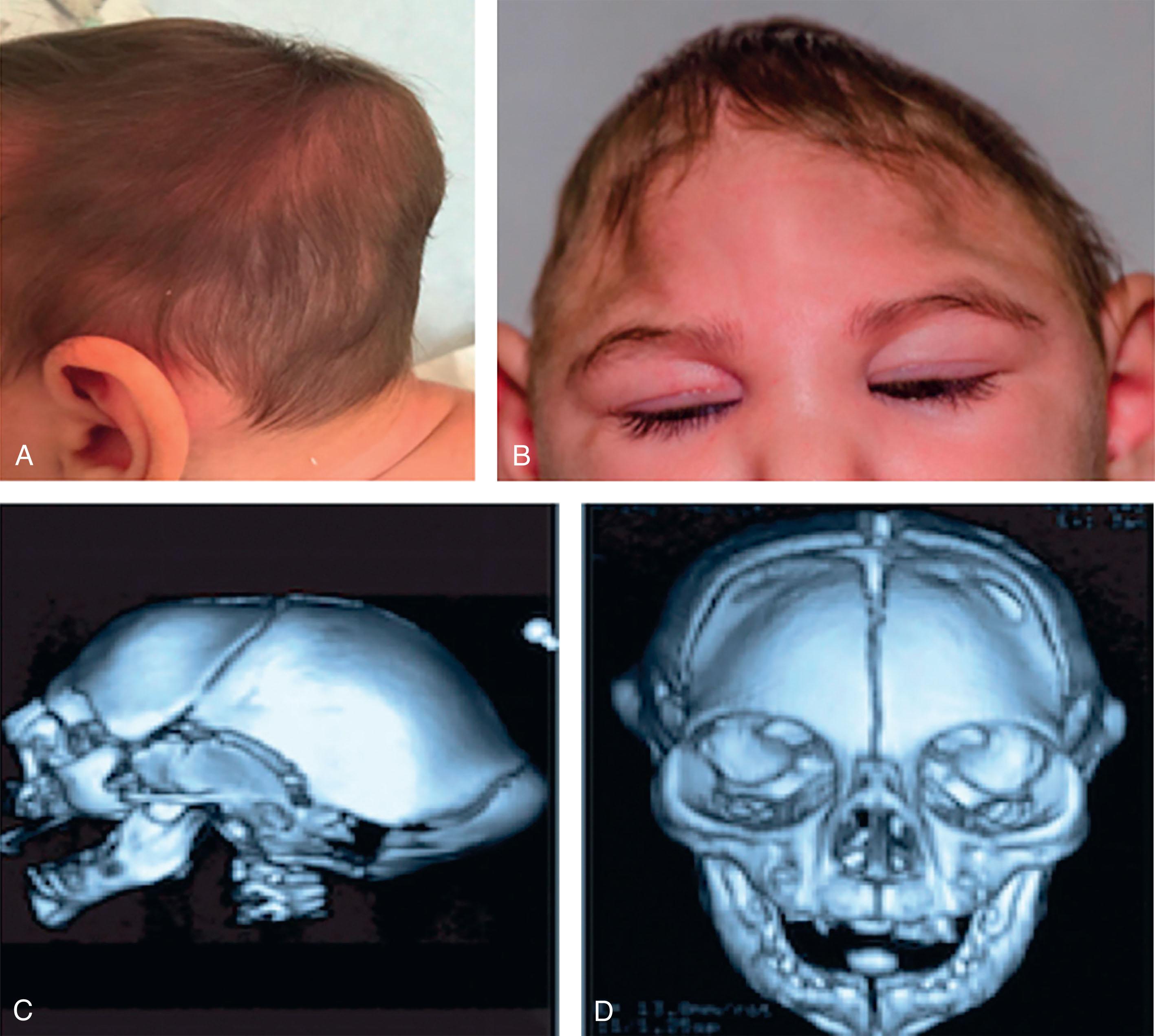
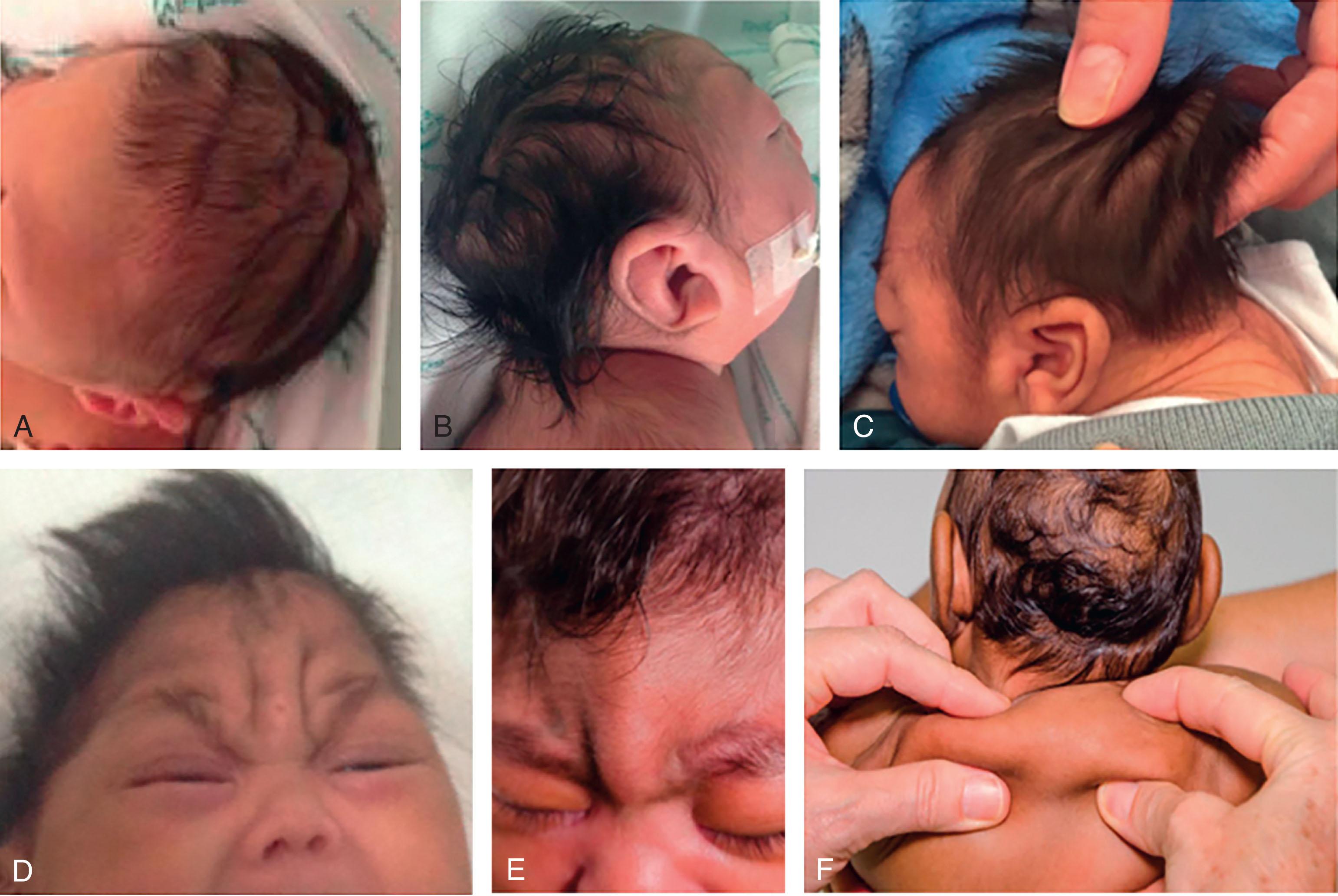
Fetal brainstem disconnection syndrome is a severe, rare brain disorder resulting from a midbrain-hindbrain segmentation defect resulting in neurological defects (hypotonia, absent eye contact, clinical signs of thermoregulatory dysfunction, and paralysis of some cranial nerves), respiratory distress, early death, and characteristic postnatal brain imaging findings (disconnection between the upper pons and the medulla oblongata with cerebellar hypoplasia). In 70% of cases, the basilar artery was noted to be quite hypoplastic ( Fig. 51.3 ). A review of 14 cases suggested a vascular disruption defect in 9 cases based on imaging findings, with confirmation by autopsy in at least 2 cases. In previously reported cases, nine patients died early during the first days or months of life, while three patients reached 1 year of life and two patients were still alive after that age with severe disability.
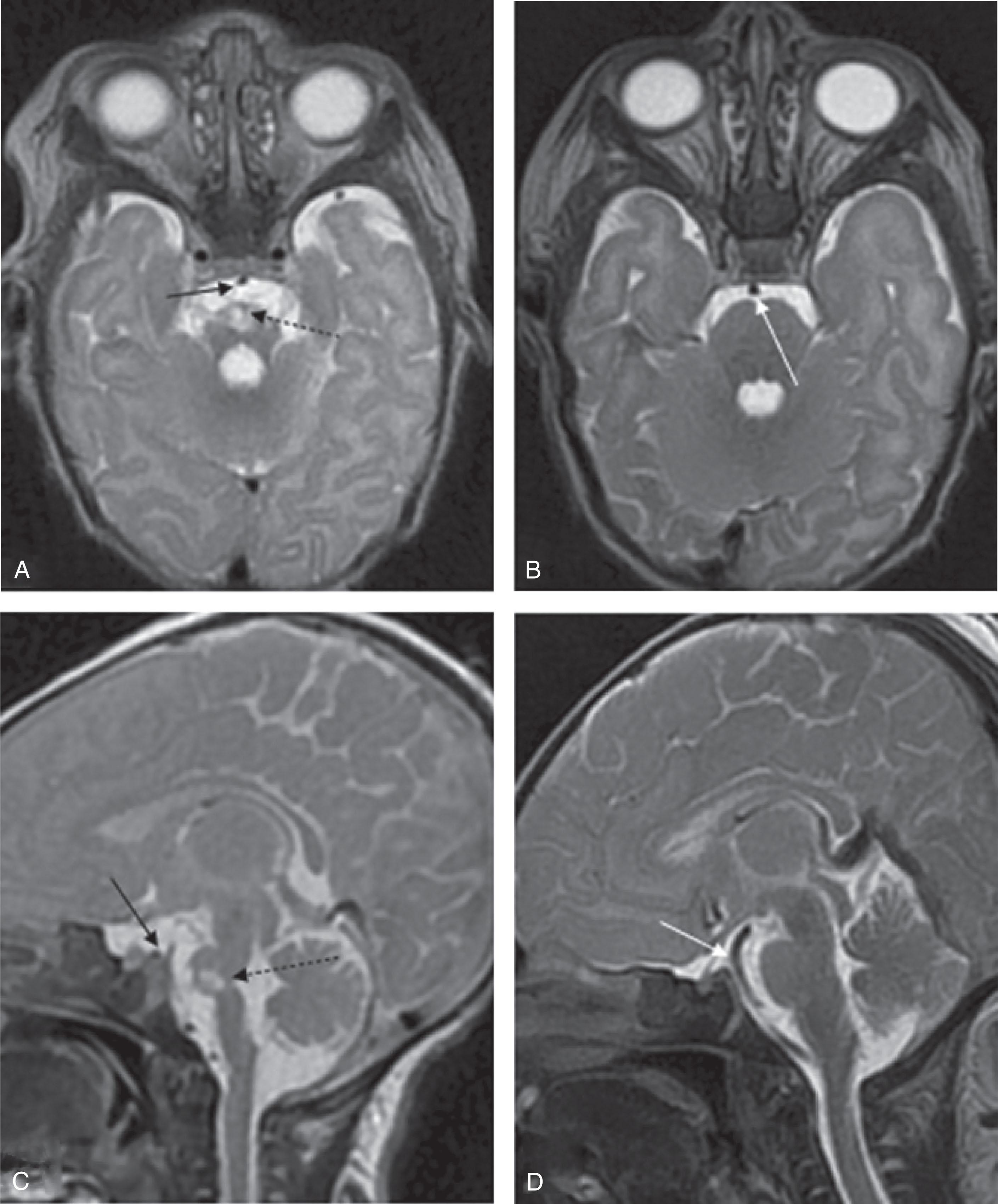
Early amniocentesis (at 11 to 12 weeks instead of 15 to 16 weeks) has been associated with a 1% to 2% risk for talipes equinovarus. Amniotic fluid leakage before 22 weeks was the only significant factor associated with clubfoot, there being a 15% risk with leakage but only a 1.1% risk without leakage ( Fig. 51.4 ). None of the cases had persistent leakage at 18 to 20 weeks. In some circumstances early amniocentesis might result in a developmental arrest of the foot as it transitions from a normal equinus position at 9 weeks to a neutral position at 12 to 13 weeks. The lateral side of the distal tibia grows faster than the medial side, which may result in pressure necrosis of the lateral distal tibia at 11 to 12 weeks.
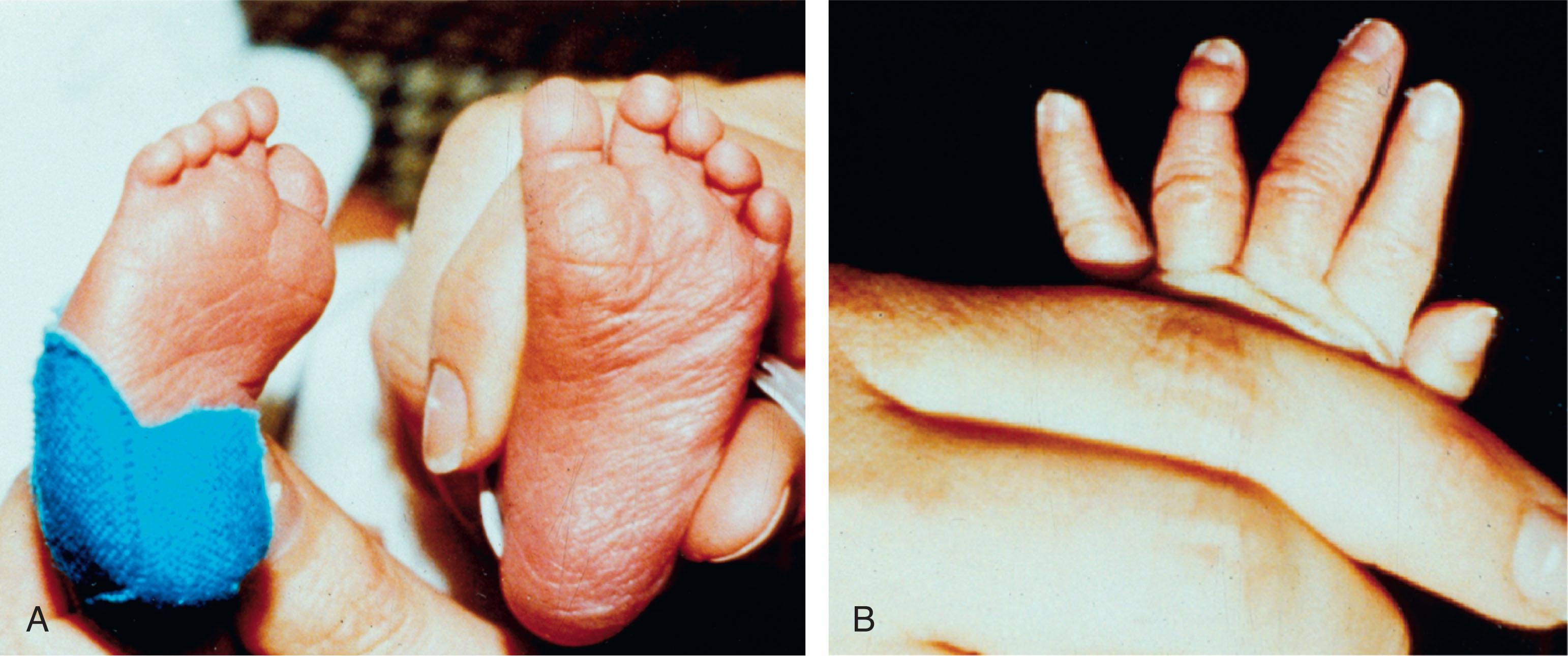
Needle injuries from amniocentesis have been reported, primarily in the era before ultrasound-guided procedures ( Figs. 51.5 and 51.6 ). Most of these injuries result from direct trauma, vascular disruption, or amniotic band disruption. Midtrimester amniocentesis with concurrent ultrasound guidance appears to be associated with a procedure-related rate of excess pregnancy loss of 0.6% and reductions in the incidence of needle punctures and bloody amniotic fluid.
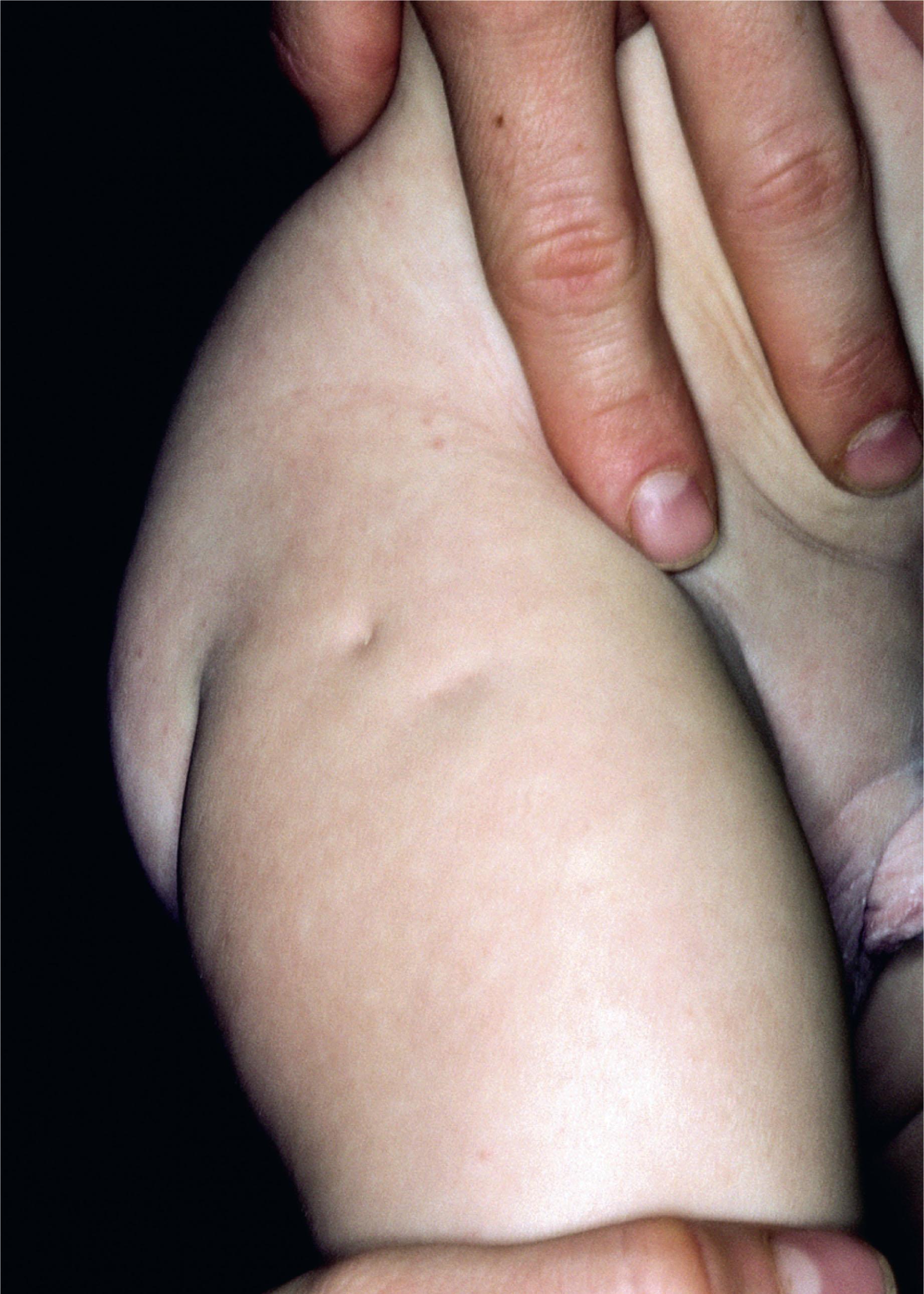
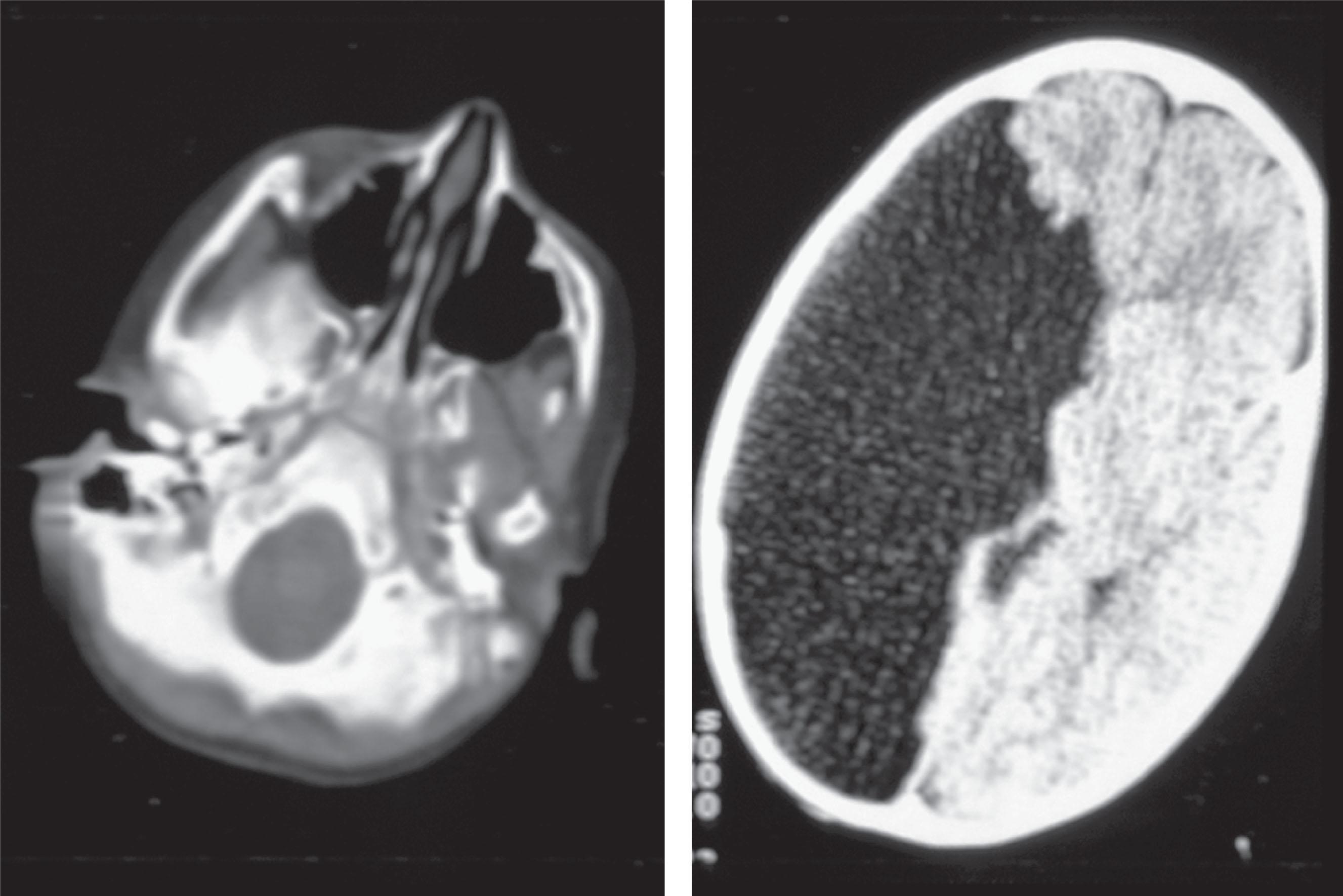
Become a Clinical Tree membership for Full access and enjoy Unlimited articles
If you are a member. Log in here